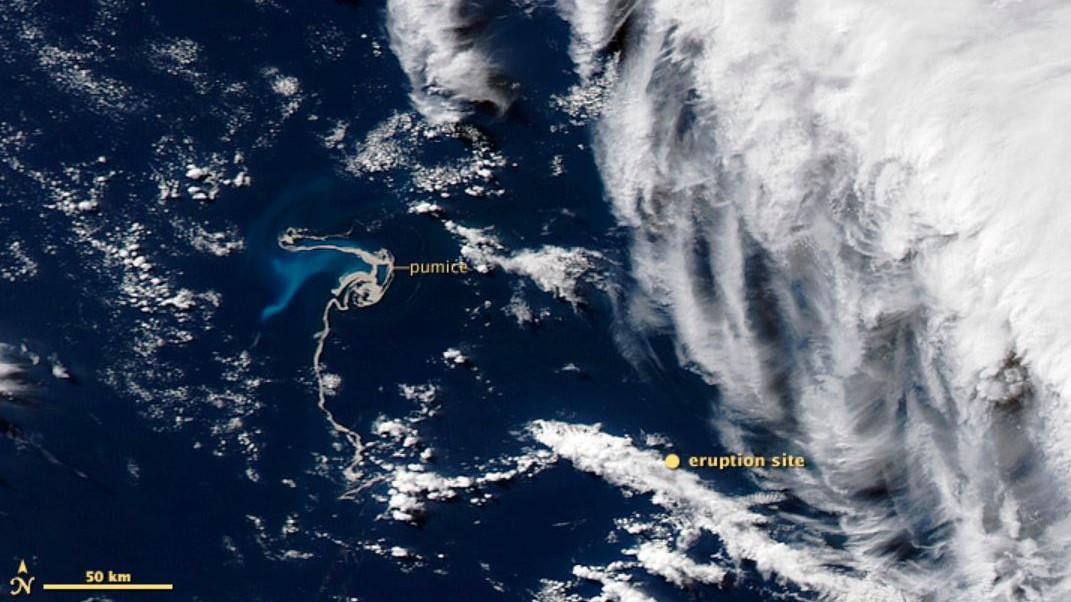
Submitted by Dr C.M. Martin-Jones on Mon, 12/12/2022 - 09:54
The largest recorded deep ocean volcanic eruption happened in 2012, when the Havre seamount in the Kermadec arc, New Zealand, exploded — releasing a raft of pumice up to five metres thick and covering an area of 400 square kilometres.
Roughly three quarters of volcanoes on Earth are not on land but in the deep ocean, hidden at depths of 1-4 km on the seafloor. “Eruptions on the sea floor are a real challenge for us to study,” said Eric Newland, PhD student in Cambridge’s Department of Earth Sciences. There have only been a handful of cases where a remotely operated vehicle has caught one of these eruptions on camera.
To understand deep-ocean eruptions, Newland has set up a series of lab experiments where he can watch miniature eruptions taking place in tanks of water. The results, which Newland will be presenting at the AGU’s 2022 Fall Meeting, show how different ash clouds rising from underwater eruptions can be from those on land.
When volcanoes erupt on land, they can produce an ash cloud that, under the right conditions, becomes buoyant. That buoyancy results from the plume sucking in external air, which then heats up and propels the plume higher until it reaches air of equivalent density. Generally, the higher the plume, the wider the volcanic ash is distributed on the ground.
But the physics driving underwater eruption plumes are different to those on land, explains Newland. Recent model experiments have shown that deep water eruptions can actually be negatively buoyant — meaning that the plume takes in so much cold seawater that collapses back on itself. In these cases, the plume only rises ten to fifty to two hundred metres above the vent.
But, according to Newland, the picture is more complex, “That negative buoyancy can’t explain the large blanket of deposits often observed around submarine volcanoes.”
Newland’s lab experiments show that underwater plumes can actually separate into two, forming a positively buoyant upper section. That happens because particles rain out of the top of the plume, letting in enough hot water from the vent that this level can then become buoyant again.
According to Newland, this finding might explain how underwater eruption plumes gain enough height to spread ash over tens of kilometres. Newland has also developed a model that predicts the type of plume that could be released by underwater eruptions of different sizes, with plumes containing a range of particles sizes. In a recent paper, Newland applied the model to the 2012 Havre eruption giving a first estimate of the eruption’s intensity. By better constraining the size of underwater eruptions, he hopes to ultimately understand heat flux from volcanic ridges and seamounts which are an important factor in deep ocean temperature and chemistry.
